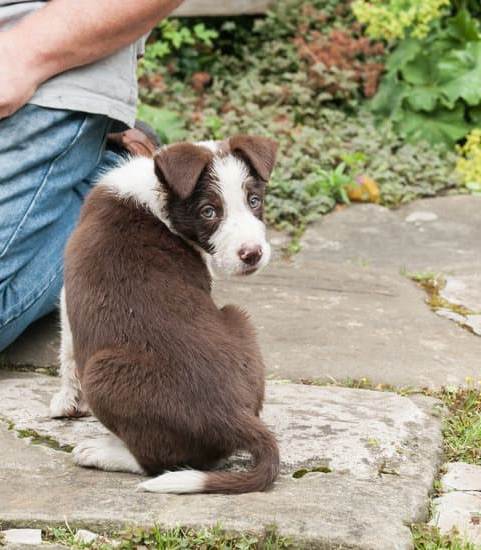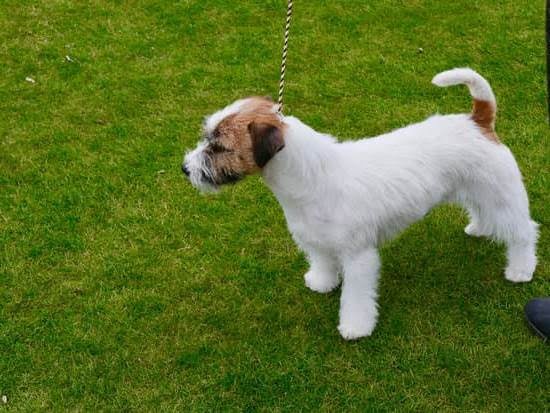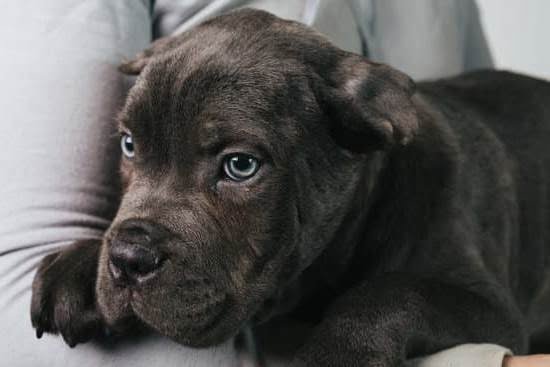Are you wondering how to train a dog not to lick everything? Dog owners often find themselves dealing with the challenge of excessive licking behavior in their pets. It can be frustrating and concerning, but it is essential to understand the underlying reasons behind this behavior in order to address it effectively.
Excessive licking in dogs can stem from various factors, including anxiety, boredom, attention-seeking, or even medical issues. This article will explore the reasons behind this behavior and provide valuable insights on how to help your furry friend overcome it.
In the following sections, we will delve into the negative effects of excessive licking on a dog’s health and behavior, as well as basic obedience training techniques that can be applied to discourage this behavior. Additionally, we will discuss the use of positive reinforcement and other strategies to redirect your dog’s attention and provide mental and physical stimulation to reduce excessive licking.
Understanding the root causes of excessive licking is crucial for implementing appropriate training methods. By gaining insight into your dog’s behavior, you can take proactive steps to manage and prevent this common issue. Stay tuned for practical tips and techniques that will empower you to address your dog’s excessive licking tendencies effectively.
The Negative Effects of Excessive Licking on a Dog’s Health and Behavior
Understanding the reasons behind excessive licking in dogs is crucial in addressing and preventing this behavior. Dogs may lick excessively due to various reasons such as boredom, anxiety, skin irritation, or even compulsive behavior. Identifying the underlying cause of your dog’s licking can help in developing an effective training plan to address this issue.
The negative effects of excessive licking on a dog’s health and behavior should not be overlooked. Constant licking can lead to skin irritations, hot spots, hair loss, and even open wounds. In addition, excessive licking can also be a sign of underlying health issues that require medical attention. Furthermore, it can become a compulsive behavior that affects a dog’s overall well-being and quality of life.
When it comes to how to train a dog not to lick everything, basic obedience training plays a significant role. Teaching your dog basic commands such as “sit,” “stay,” and “leave it” can help in managing their behavior and redirecting their attention when they start to lick excessively. Positive reinforcement techniques such as rewarding good behavior with treats or praise can also be effective in discouraging licking behavior.
| Reasons Behind Excessive Licking | Negative Effects on Dog’s Health and Behavior |
|---|---|
| Boredom | Skin irritations |
| Anxiety | Hot spots |
| Skin irritation | Hair loss |
| Compulsive behavior | Open wounds |
Basic Obedience Training for Dogs
Obedience training is essential for all dogs, including those who have a habit of excessive licking. This type of training helps establish a strong foundation for proper behavior and communication between you and your furry friend. Basic obedience training includes teaching your dog commands such as sit, stay, come, and leave it, which can be especially helpful in managing their licking behavior.
The key to successful obedience training is consistency and patience. It’s important to set aside regular time for training sessions and to use positive reinforcement techniques such as treats, praise, and toys to reward good behavior. When it comes to teaching your dog not to lick everything, using the “leave it” command can be particularly useful. By consistently practicing this command in various situations, you can help redirect your dog’s attention away from licking.
In addition to teaching basic commands, obedience training also involves establishing boundaries and rules for your dog. This includes setting limits on where they are allowed to go and what objects they are allowed to interact with.
By establishing clear boundaries through obedience training, you can help reduce the likelihood of your dog engaging in excessive licking behaviors. If you’re unsure about how to train a dog not to lick everything or need additional guidance, consider enrolling in a dog obedience class or seeking assistance from a professional dog trainer.
Using Positive Reinforcement to Discourage Licking Behavior
When it comes to training a dog not to lick everything, positive reinforcement can be a very effective method. This involves rewarding your dog for good behavior rather than punishing them for the bad.
When your dog refrains from licking things they shouldn’t, offer them a small treat or praise them with verbal cues such as “good boy/girl”. This will help your dog associate not licking with something positive and increase the likelihood that they will continue this behavior.
It’s important to ensure that the reward is given immediately after the desired behavior. Dogs live in the present moment and may not make the connection between their action and the consequence if there is a delay in reward. Another important aspect of using positive reinforcement is consistency. You should reward your dog every time they choose not to lick, especially during the early stages of training.
In addition to treats and verbal praise, you can also use toys or playtime as a form of positive reinforcement when training your dog not to lick everything. Engage in interactive games as soon as your dog refrains from licking, or offer them a favorite toy as a reward for good behavior.
| Positive Reinforcement Method | Benefits |
|---|---|
| Treats | Rewards good behavior and creates positive association |
| Verbal Praise | Encourages obedience and reinforces desired behavior |
| Toys/Playtime | Adds variety and fun to training sessions, promoting engagement |
Redirecting Your Dog’s Attention to Alternative Behaviors
Introduction to Redirecting Behavior
When it comes to training a dog not to lick everything, one effective strategy is to redirect their attention to alternative behaviors. This involves teaching your dog to replace the licking behavior with more appropriate activities. By redirecting their focus, you can help them break the habit of excessive licking and engage in more desirable behaviors.
Implementing Distraction Techniques
One way to redirect your dog’s attention is by using distraction techniques. When you notice your dog starting to lick excessively, try introducing a toy or engaging them in playtime. Providing them with a fun and stimulating activity can help shift their focus away from licking and onto something more constructive.
Training Commands as Distraction
Another effective method for redirecting your dog’s attention is by incorporating training commands. Teach your dog basic obedience commands such as “sit,” “stay,” or “leave it.” When you notice them starting to lick excessively, use these commands to redirect their focus and encourage a different behavior. With consistent practice, your dog will learn to respond to these commands and choose alternative behaviors instead of licking.
By implementing these redirection techniques, you can effectively train your dog not to lick everything. Remember that consistency and patience are key when working on behavior modification with your canine companion. If persistent issues with excessive licking arise, seeking professional help from a certified dog trainer or behaviorist may provide additional support and guidance.
Incorporating Mental and Physical Stimulation to Reduce Licking Behavior
The Importance of Mental and Physical Stimulation
Dogs often engage in excessive licking behavior out of boredom or frustration, which is why incorporating mental and physical stimulation is essential in reducing this behavior. Mental stimulation can include activities such as puzzle toys, obedience training, and interactive games that challenge your dog’s cognitive abilities. On the other hand, physical exercise like regular walks, runs, and playtime can help release pent-up energy and provide an outlet for your dog’s natural instincts.
Introducing Interactive Toys and Games
Interactive toys and games are a great way to keep your dog mentally engaged and physically active. Consider investing in treat-dispensing toys that require your dog to work for their treats, as well as puzzle games that encourage problem-solving skills. Additionally, playing games such as fetch, tug-of-war, or hide-and-seek can provide much-needed physical activity while also keeping your dog’s mind occupied.
Adding Variety to Your Dog’s Routine
To prevent boredom and reduce licking behavior, it’s important to introduce variety into your dog’s daily routine. This can be achieved by changing walking routes, trying out different obedience training exercises, or exploring new environments during outdoor activities. By keeping things interesting and engaging for your dog, you can significantly decrease the likelihood of them resorting to excessive licking out of sheer boredom.
By incorporating mental and physical stimulation into your dog’s daily life, you can effectively reduce their inclination to engage in excessive licking behavior. These enrichment activities not only provide much-needed mental and physical exercise but also contribute to a healthier and happier canine companion overall.
Seeking Professional Help for Persistent Licking Issues
If your dog’s licking behavior persists despite your efforts to address it through basic obedience training and positive reinforcement, seeking professional help may be necessary. A veterinarian or a certified dog trainer can provide valuable insight and guidance on how to train a dog not to lick everything. Here are some steps you can take when seeking professional assistance:
- Start by scheduling a visit to the vet to rule out any underlying medical issues that may be causing the excessive licking. The veterinarian can conduct a thorough examination and run diagnostic tests to determine if there are any health concerns contributing to the behavior.
- If no medical issues are identified, consider consulting with a certified dog trainer or animal behaviorist who specializes in working with dogs exhibiting compulsive licking behaviors. They can assess your dog’s specific situation and develop a tailored training plan to address the issue effectively.
- Be open and transparent about your dog’s licking behavior during your consultation with the professional. Provide them with details about when and where the licking occurs, as well as any triggers or patterns you have observed. This information will help them devise a targeted training approach.
Remember, seeking professional help does not signify failure as a pet owner but rather demonstrates your commitment to addressing your dog’s well-being. With the expertise and support of experienced professionals, you can work together to implement effective strategies for managing and modifying your dog’s licking behavior.
Additional Tips and Techniques for Managing and Preventing Excessive Licking Behavior
One effective way on how to train a dog not to lick everything is by incorporating mental and physical stimulation into their daily routine. Providing your dog with enough exercise and mental enrichment can help reduce their urge to constantly lick everything in sight. Take your dog for regular walks, engage in interactive play sessions, and provide them with puzzle toys or food dispensing toys to keep their mind occupied.
Another tip for managing and preventing excessive licking behavior is to create a safe and comforting environment for your dog. Dogs often resort to excessive licking as a coping mechanism for anxiety or stress. By ensuring that your dog has a comfortable and secure space, you can help alleviate their need to constantly lick objects or themselves. Consider using calming aids such as pheromone diffusers or music specifically designed for dogs to create a soothing atmosphere.
Furthermore, it is important to establish a consistent routine and set boundaries for your dog. Consistency in training and daily activities can help reduce anxiety and uncertainty in dogs, ultimately decreasing the likelihood of excessive licking behavior.
Use positive reinforcement techniques such as treats, praise, and affection when your dog displays appropriate behaviors and refrain from punishing or scolding them for licking. With patience, consistency, and the implementation of these additional tips, you can effectively manage and prevent excessive licking behavior in your canine companion.
- Provide regular exercise
- Engage in interactive play sessions
- Use puzzle toys or food dispensing toys
- Create a safe and comforting environment
- Establish a consistent routine
- Set boundaries for your dog
- Use positive reinforcement techniques
- Avoid punishing or scolding your dog for licking
Conclusion and Final Thoughts on the Importance of Training a Dog Not to Lick Everything
Training a dog not to lick everything is an essential aspect of responsible pet ownership. While licking is a natural behavior for dogs, excessive licking can have negative effects on their health and behavior. By understanding the reasons behind this behavior and utilizing basic obedience training, positive reinforcement, and redirecting techniques, pet owners can effectively manage and prevent excessive licking in their dogs.
It is important to recognize that excessive licking can be detrimental to a dog’s physical health, leading to skin irritations and infections. Furthermore, this behavior can also indicate underlying issues such as anxiety or boredom. By incorporating mental and physical stimulation into a dog’s routine, pet owners can reduce the likelihood of their pets engaging in excessive licking.
Seeking professional help may also be necessary for persistent licking issues. A veterinarian or a certified dog trainer can provide personalized guidance and support in addressing this behavior. Additionally, implementing proactive measures such as providing appropriate chew toys or using deterrent sprays can help manage and prevent excessive licking.
In conclusion, training a dog not to lick everything is a significant aspect of promoting their overall well-being. Through patience, consistency, and understanding the underlying reasons behind this behavior, pet owners can effectively address and manage excessive licking in their dogs. By implementing the tips and techniques outlined in this article, pet owners can create a harmonious environment for both themselves and their furry companions.
Frequently Asked Questions
How Do I Stop My Dog From Constantly Licking Everything?
If your dog is constantly licking everything, it could be a sign of boredom, anxiety, or even a medical issue. It’s important to first rule out any potential health problems by consulting with a veterinarian. Once medical issues have been ruled out, providing mental and physical stimulation through interactive toys and exercise can help reduce excessive licking behavior.
How Do I Get My Dog to Stop Licking the Surfaces?
To get your dog to stop licking surfaces, it’s important to provide alternative activities and outlets for their energy. Providing chew toys or treats that require some effort to extract can redirect their focus away from licking surfaces.
Consistency in re-directing their behavior and positive reinforcement when they choose the appropriate activity can also be effective in changing this behavior.
How Do You Teach a Dog to Stop Licking?
Teaching a dog to stop licking involves consistency, patience, and positive reinforcement. Redirecting their attention to an appropriate toy or activity every time they start licking is important.
Additionally, teaching the “leave it” or “no lick” command through training exercises can further reinforce the desired behavior. Consistently praising and rewarding them when they follow the cue will help them understand what is expected of them.

Welcome to the blog! I am a professional dog trainer and have been working with dogs for many years. In this blog, I will be discussing various topics related to dog training, including tips, tricks, and advice. I hope you find this information helpful and informative. Thanks for reading!





